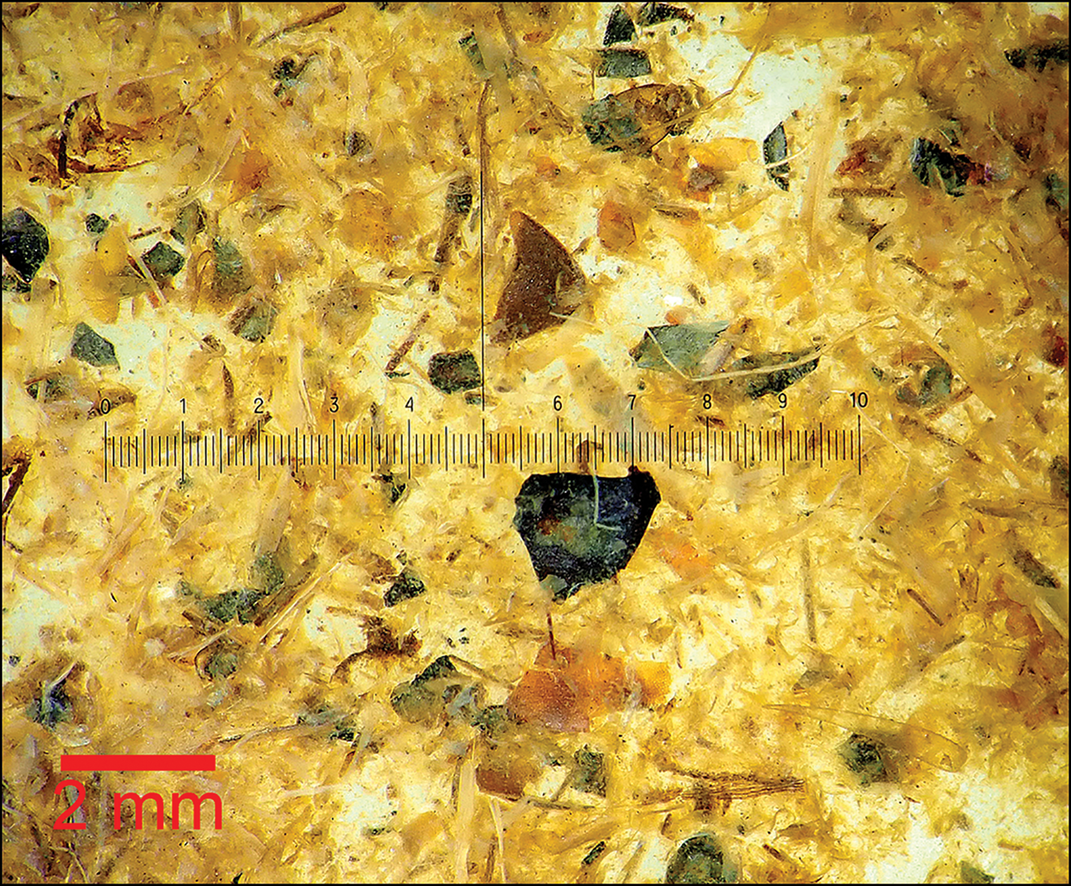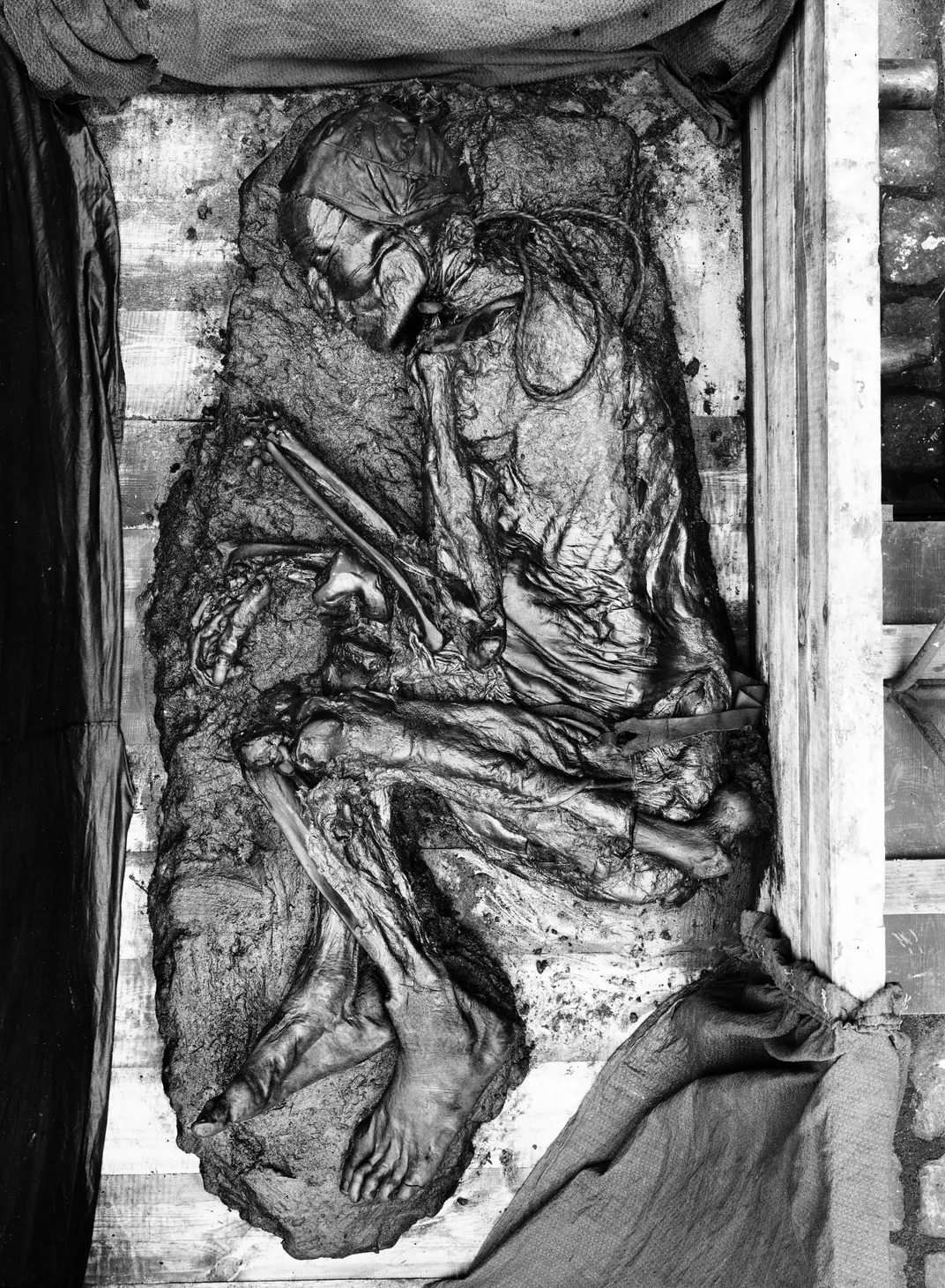What Did Tollund Man, One of Europe’s Famed Bog Bodies, Eat Before He Died?
The enigmatic, 2,400-year-old mummy’s last meal consisted of porridge and fish
:focal(441x297:442x298)/https://tf-cmsv2-smithsonianmag-media.s3.amazonaws.com/filer/54/71/54713843-3db6-4a70-adaa-8e3f91638c37/tollund_man.jpg)
Many questions about Tollund Man—arguably the most famous of Europe’s “bog bodies”—remain unanswered. Killed more than 2,000 years ago, the Iron Age man was buried in a peat bog that naturally preserved his body. The exact circumstances of his death remain unclear, but experts “tend to agree that [his] killing was some kind of ritual sacrifice to the gods,” wrote Joshua Levine for Smithsonian magazine in 2017.
What scientists do know for certain are the precise contents of Tollund Man’s last meal: porridge and fish. As Elizabeth Djinis reports for National Geographic, a team led by Nina Helt Nielsen, director of research at Denmark’s Silkeborg Museum, has analyzed the contents of the ancient man’s gut to determine what he ate before he died. The findings are newly published in the journal Antiquity.
Tollund Man’s well-preserved body was first dredged up from the Bjældskovdal peat bog, in north-central Denmark, in 1950. His remains were so intact that authorities initially suspected he was a recent murder victim, notes the Silkeborg on its website. He is one of scores of bog bodies that have been unearthed in wetlands across Britain and northern Europe.
A 30- to 40-year-old man at the time of his death, Tollund Man was hanged between 405 and 380 B.C.E., per Laura Geggel of Live Science. (The leather noose is still wrapped around his neck.) Someone then carefully placed his body in a sleeping position in a peat-cutting pit.
Shortly after the body’s discovery, researchers studied the man’s intestinal track and concluded that he had eaten his last meal about 12 to 24 hours before he died. But science has come a long way in the last seven decades, so Nielsen and her team were eager to reexamine their subject’s stomach.
“Back in 1950, they only looked at the well preserved grains and seeds, and not the very fine fraction of the material,” Nielsen tells Tom Metcalfe of NBC News. “But now we have better microscopes, better ways of analyzing the material and new techniques. So that means that we could get more information out of it.”
To identify the contents of Tollund Man’s last meal, researchers scoured his large and small intestines for decomposed plant parts, or “macrofossils,” and analyzed pollen samples, proteins and other chemical traces, according to a statement from the Silkeborg, which holds the body in its collections.
As it turns out, Tollund Man’s final meal was “remarkable simply because it was, well, unremarkable,” Dijinis tells National Geographic. He consumed a simple porridge of barley, pale persicaria (a kind of weed) and flax, and perhaps a bit of bony fish. Bits of charred food crusts found in his gut suggest the porridge was cooked in a clay vessel, the authors conclude.
The researchers also found that Tollund Man was infected with three kinds of parasites, including tapeworms. He probably contracted the worms by drinking contaminated water or regularly eating undercooked meat, Nielsen tells NBC News.
Archaeologists generally agree that Tollund Man was a victim of human sacrifice, perhaps a ritual killing to ensure fertility, per Smithsonian. But while his death may have been significant, he does not appear to have consumed anything “special,” such as hallucinogens or pain relievers, in anticipation of the sacrifice, the authors write in the study.
It remains unclear whether the long-ago killers knew that Tollund Man’s cadaver would be so well preserved. Thanks to the wetlands’ high-acidity, low-oxygen and cold environment, as well as the chemical interactions produced by a particular kind of sphagnum moss, the bogs eventually “mummify” corpses, making the bodies’ skin, hair and nails a leathery brown. The unique chemical composition of peat bogs effectively works as a “wonderful refrigerator for conserving dead humans,” as Levine noted for Smithsonian. (Tollund Man’s chin hairs and wool cap are still easily identifiable nearly 2,400 years later, he added.)
Though his last meal was mostly standard fare, researchers did spot one intriguing ingredient in Tollund Man’s porridge: threshing waste, or a collection of wild seeds that were normally weeded out of grains during the threshing process. Early Iron Age people in Denmark may have added these castoffs to porridge to increase its nutritional value—or, the researchers speculate, they might have added the extra substance only for special occasions, such as ritual killings.
With limited data at its disposal, Nielsen tells NBC News, the team will have a difficult time assessing these hypotheses.
As Henry Chapman, an archaeologist at the University of Birmingham who was not involved in the study, tells National Geographic, bog bodies represent just a tiny fraction of early Iron Age people. The unusual circumstances of their deaths and burials—namely, possible human sacrifice—mean that scientists can’t easily use evidence from the bodies to draw conclusions about entire populations.
In other words, says Chapman, “[b]og bodies are unusual. That’s both their blessing, and their curse.”
/https://tf-cmsv2-smithsonianmag-media.s3.amazonaws.com/accounts/headshot/nora.png)


/https://tf-cmsv2-smithsonianmag-media.s3.amazonaws.com/filer/bf/a2/bfa2e62b-e859-4fb9-9b41-dfc14a2b3354/man.jpeg)

/https://tf-cmsv2-smithsonianmag-media.s3.amazonaws.com/accounts/headshot/nora.png)